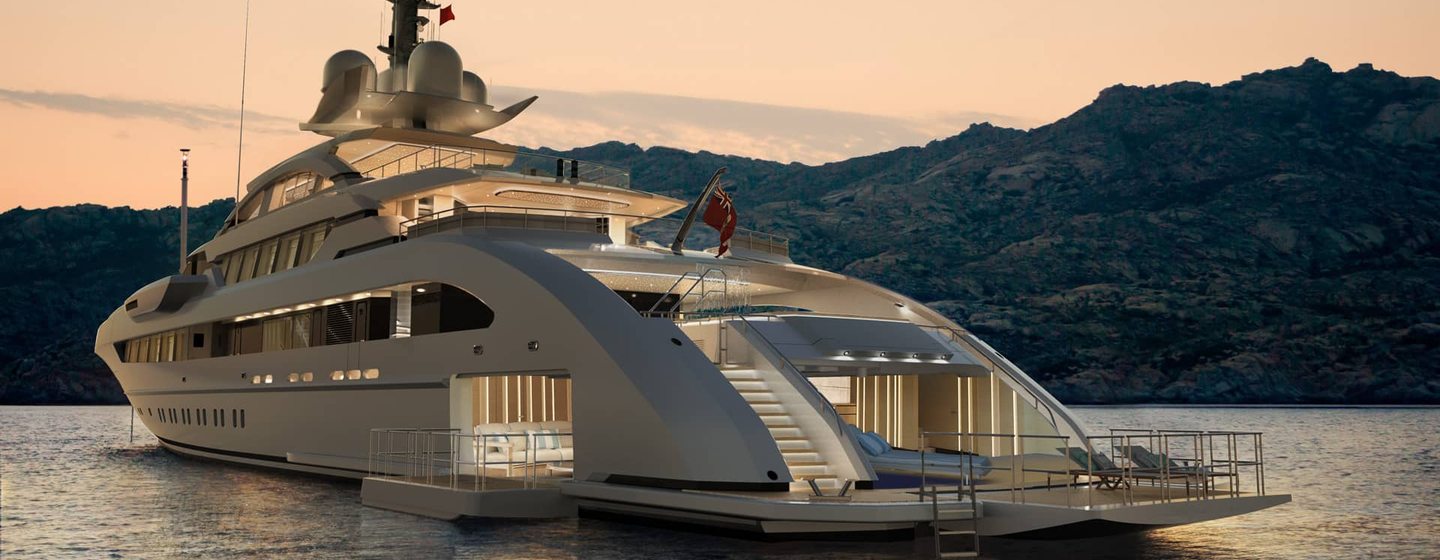Superyachts, megayachts, and awe-inspiring gigayachts represent the zenith of maritime excellence.
In this article, we delve into the world of these extraordinary vessels, each setting a new standard for luxury and grandeur on the open water. From sleek exterior styling to lavishly upholstered interiors complete with spas, gyms, and impressive cinema rooms, we'll explore the unique features, the grandeur, and the allure of these sometimes gargantuan vessels.
- Superyachts, Megayachts and Gigayachts: The Industry Evolution
- Size Matters: How Do Superyachts, Megayachts and Gigayachts Compare?
- What is a Superyacht?
- What is a Megayacht?
- What is a Gigayacht?
- Regulatory Development: Comparing Superyachts, Megayachts and Gigayachts
- The Ultimate Value: How Do Superyachts, Megayachts and Gigayachts Compare?
- Summary
Superyachts, Megayachts and Gigayachts: The Industry Evolution
The luxury yacht industry has undergone significant transformation over the past three decades. In the 1990s, vessels over 40 meters were considered exceptionally large. Today's market sees regular delivery of 100m+ gigayachts, with the largest private vessel, Azzam, measuring 180 meters. This growth reflects increasing global wealth concentration and the desire for ultimate privacy and luxury experiences.
The classification system itself has evolved to accommodate this growth. Traditional definitions often stopped at "superyacht," but the industry now recognizes distinct categories to properly classify vessels that can exceed the size of naval frigates. Modern gigayachts like REV Ocean (183m) and Azzam (180m) represent floating cities with crews exceeding 100 people and operating budgets rivaling small companies.
Yacht Classification Matrix
| Category | Length Range | Beam Range | Crew Size | Gross Tonnage | Price Range | Annual Operating Cost | Key Features |
|---|---|---|---|---|---|---|---|
| Yacht | <24m (<78ft) | 3–8m | 0–5 | <500 GT | $100K – $5M | 5–15% of purchase | Owner operated, basic luxury |
| Superyacht | 24–60m (78–197ft) | 6–12m | 6–15 | 500–3000 GT | $5M – $50M | 10–15% of purchase | Professional crew, MLC compliance |
| Megayacht | 60–100m (197–328ft) | 10–18m | 15–50+ | 3000–8000 GT | $50M – $500M | 10–12% of purchase | Multiple decks, helipad capability |
| Gigayacht | 100m+ (328ft+) | 15–25m+ | 50–100+ | 8000+ GT | $500M – $2B+ | 8–12% of purchase | Ultimate luxury, global capability |
Size Matters: How Do Superyachts, Megayachts and Gigayachts Compare?
Yacht size is measured by Length Overall (LOA), which is the maximum length of the vessel's hull including any structural extensions but excluding outboard motors, bowsprits, or other removable equipment. Gross tonnage measures internal volume. A 40m yacht might have 500 GT, while a 80m yacht could have 2,500 GT depending on beam and internal layout.
When it comes to these yacht types, there is no official size chart. Some shipbuilders refer to 45m (148ft) models as megayachts, although it would seem a vessel of this size fits within the superyacht category.
Gigayacht is currently the largest category for private recreational vessels. Some naval architects discuss "terayachts" for hypothetical vessels over 200m, but no such private vessels exist yet.
To put it simply, it seems the terminologies are used to market a wide range of different-sized yachts. Whatever word you choose to describe them though, each nautical behemoth is sure to offer its own unparalleled level of luxury and workmanship to those lucky enough to step onboard.
What size yacht requires a professional crew?
Yachts 24 meters (78 feet) and larger typically require professional crew due to complexity of systems, safety requirements, and Maritime Labour Convention regulations that apply to commercial yachts over this length, However, larger yachts benefit from economies of scale in crew efficiency, fuel consumption per guest, and system maintenance, though absolute costs remain much higher than smaller vessels.
What's included in annual operating costs?
Annual operating costs include crew salaries and benefits, fuel, maintenance and repairs, insurance, mooring and port fees, management fees, provisioning, communications, and regulatory compliance costs.
How much does yacht crew cost annually?
Crew costs typically represent 30-50% of operating expenses: $300K-500K for superyachts, $2M-8M for megayachts, and $8M-20M+ for gigayachts, including salaries, benefits, training, and accommodation.
Do yacht values depreciate like cars?
Yachts depreciate approximately 10-15% per year for the first 3-5 years, then 5-8% annually. Well-maintained yachts from premium builders may hold value better, while unique or historic yachts can appreciate.
Let's take a look at how much each yacht upkeep costs.
Operating Costs Breakdown: Superyachts, Megayachts, Gigayachts
| Expense Category | Superyacht (%) | Megayacht (%) | Gigayacht (%) | Description |
|---|---|---|---|---|
| Crew | 30–40% | 35–45% | 40–50% | Salaries, benefits, training |
| Fuel | 15–25% | 10–20% | 8–15% | Diesel, port charges |
| Maintenance | 15–20% | 15–20% | 15–20% | Repairs, refit, systems |
| Insurance | 5–10% | 5–8% | 3–7% | Hull, liability, crew |
| Mooring | 8–15% | 8–12% | 5–10% | Marina fees, anchorages |
| Management | 5–8% | 5–8% | 5–8% | Professional management |
| Other | 10–15% | 10–15% | 10–15% | Provisioning, communications |
What is a Superyacht?
Superyachts are large, luxurious vessels. These remarkable watercraft typically measure over 24m (79ft) in length and offer a range of amenities, including large cabins, dining and living areas, and entertainment systems.
Definition of a Superyacht
- Size: 24-60 meters (78-197 feet) in length
- Operation: Professional crew required (6-15 members)
- Purpose: Luxury recreation, extended cruising, entertaining
- Cost Range: $5-50 million purchase, $500K-$7.5M annual operating
- Regulations: MLC compliance mandatory, ISM Code, flag state requirements
- Typical Features: Luxury interiors, water toys, advanced navigation, guest suites
- Market: High-net-worth individuals, charter market


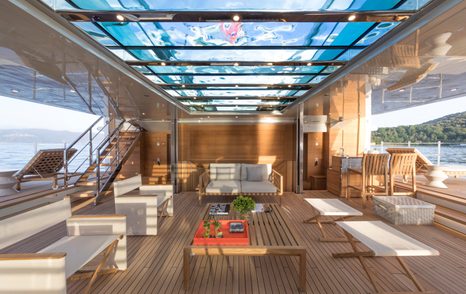
Designed to provide a lavish experience for their owners and guests, superyachts are not only private retreats but are also used for hosting events and cruising in style. In the yachting industry, superyachts represent a large part of the market.
What is a Megayacht?
A megayacht is typically characterized by its impressive size of between 60m (197ft) and 100m (328ft). The vessels are packed full of luxurious features, making them a prominent symbol of opulence. What defines a megayacht is its ability to offer a high level of comfort and a vast array of amenities to its owners and guests.
Megayacht Definition
- Size: 60-100 meters (197-328 feet) in length
- Operation: Large professional crew (15-50+ members)
- Purpose: Ultra-luxury lifestyle, global cruising, major entertaining
- Cost Range: $50-500 million purchase, $7.5M-$75M annual operating
- Regulations: Full commercial vessel compliance, enhanced safety systems
- Typical Features: Multiple decks, helicopter pad, spa, cinema, pool, tender garage
- Market: Ultra-high-net-worth individuals, billionaires
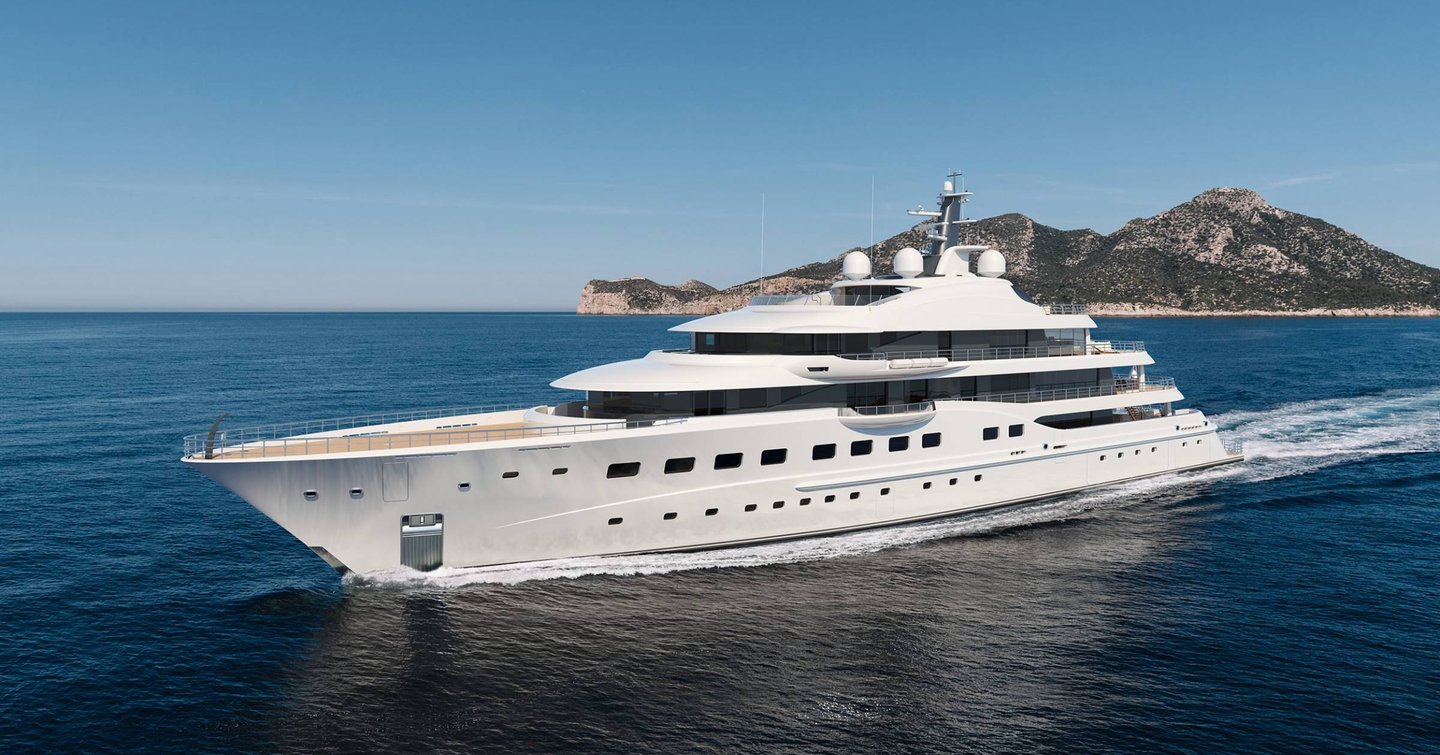
Spacious cabins feature in addition to sophisticated interior design, gourmet dining areas, entertainment systems, and recreational amenities like swimming pools, jacuzzis, and water toys. Some even feature a helipad (or two). While not as large as gigayachts, they are designed to cater to the discerning tastes of their affluent clientele and offer a home-away-from-home experience on the water.
Can Superyachts and Megayachts Go Anywhere in the World?
Most superyachts are designed for global cruising but may have restrictions based on ice class, draft limitations, bridge clearances, or political considerations in certain regions.
| Yacht Size | Crew Size | Port Requirements | Operating Range |
|---|---|---|---|
| 24–40m | 6–10 crew | Standard marinas | Regional |
| 40–60m | 10–15 crew | Large marinas | Continental |
| 60–100m | 15–50 crew | Superyacht facilities | Global |
| 100m+ | 50+ crew | Specialized facilities | Unlimited |
What is a Gigayacht?
Gigayachts are an extraordinary category of luxury vessel that pushes the boundaries of size. These immense vessels typically exceed 100m (328ft) in length, setting them apart as some of the largest privately owned yachts in the world. Gigayachts are the epitome of maritime luxury.
Gigayacht Definition
- Size: 100+ meters (328+ feet) in length
- Operation: Extensive crew (50-100+ members)
- Purpose: Ultimate luxury lifestyle, global presence, major events
- Cost Range: $500 million - $2+ billion purchase, $75M+ annual operating
- Regulations: Maximum maritime compliance, commercial operations capability
- Typical Features: Multiple pools, submarine bays, multiple helipads, hospitals, theaters
- Market: Billionaire-class ownership, heads of state, royal families

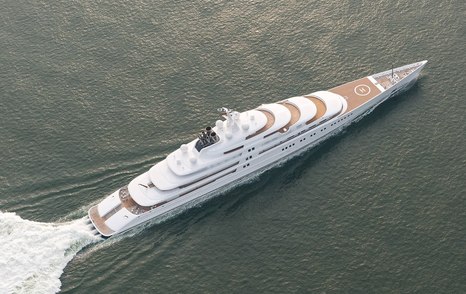
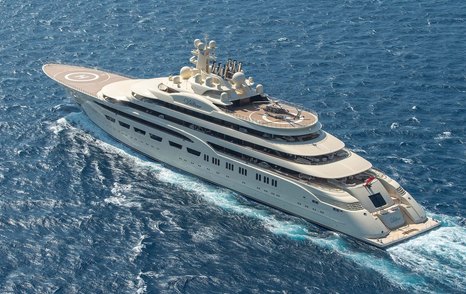
These remarkable vessels boast multiple decks, enormous cabins and suites, extravagant dining areas, world-class entertainment systems, spas, swimming pools, helipads, and even personal submarines. Gigayachts are custom-designed and meticulously crafted to cater to the desires and demands of ultra-high-net-worth individuals.
Owning or chartering a gigayacht is not merely a display of wealth but also a testament to the cutting-edge technology and design expertise of the yachting industry.
Regulatory Development: Comparing Superyachts, Megayachts and Gigayachts
Maritime regulations have struggled to keep pace with luxury yacht growth. The Maritime Labour Convention (MLC), implemented in 2013, represented the first major international effort to standardize crew working conditions on large yachts. Prior to MLC, crew working conditions varied dramatically based on flag state and owner preferences.
The International Maritime Organization (IMO) continues developing regulations specific to large yachts, recognizing they operate differently from commercial vessels despite similar sizes. The Large Yacht Code (LY3) and Passenger Yacht Code (PYC) represent efforts to create appropriate regulatory frameworks for vessels that blur the line between private and commercial operations.
Regulatory Complexity Relationships
| Vessel Size | Regulatory Requirements | Compliance Costs | Operational Complexity |
|---|---|---|---|
| <24m | Basic Safety | Low | Owner Operation |
| 24–60m | MLC + ISM | Medium | Professional Crew |
| 60–100m | Commercial Standards | High | Management Company |
| 100m+ | Maximum Compliance | Very High | Full Organization |
The Ultimate Value: How Do Superyachts, Megayachts and Gigayachts Compare?
Luxury yachts serve as symbols of ultimate success and privacy in an increasingly connected world. For ultra-high-net-worth individuals, yachts provide a mobile base for conducting business, entertaining, and maintaining privacy away from public scrutiny.
The yacht industry has also become a platform for showcasing cutting-edge design and environmental innovation. Many owners view their vessels as floating art pieces, commissioning renowned architects and artists to create unique experiences that push boundaries of what's possible on the water.
| Owner Wealth Level | Yacht Category | Usage Pattern |
|---|---|---|
| Millionaire | Superyacht | Personal / Family Use |
| Ultra-HNW | Megayacht | Entertainment / Charter |
| Billionaire | Gigayacht | Global Lifestyle / Status |
Summary
The article covers the key distinctions between yachts, superyachts, megayachts, and gigayachts. Here are the key points we addressed:
- Megayachts are characterized by impressive size between 60m (197ft) and 100m (328ft), packed with luxurious features as symbols of opulence.
- Industry consensus shows superyachts range from 37-60m, megayachts over 60m, and gigayachts over 90m (300ft).
- The terms are used by boat builders and yacht brokers to classify luxury vessels by length, with each term applying to specific size ranges.
- Superyachts represent a large part of the yachting market Superyachts, Megayachts and Gigayachts | YachtBuyer
- More than just length plays a deciding role in classification.
Inspired by all these fantastic superyacht, megayacht or gigayacht examples? View all available Superyachts For Sale globally, tracked through YachtBuyer MarketWatch, with only real listings - no fake options to waste your time. Alternatively, view all other yachts for sale.

